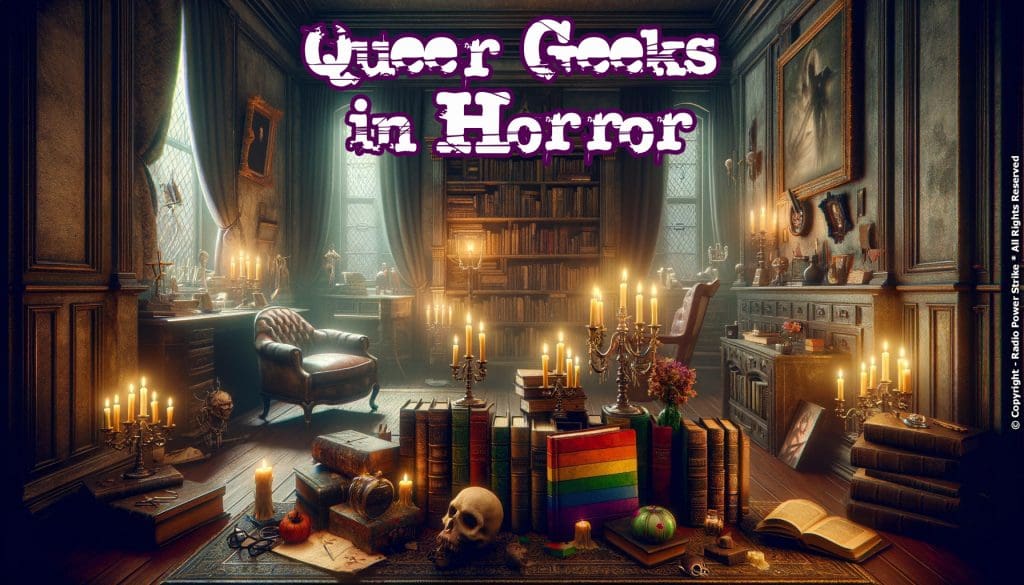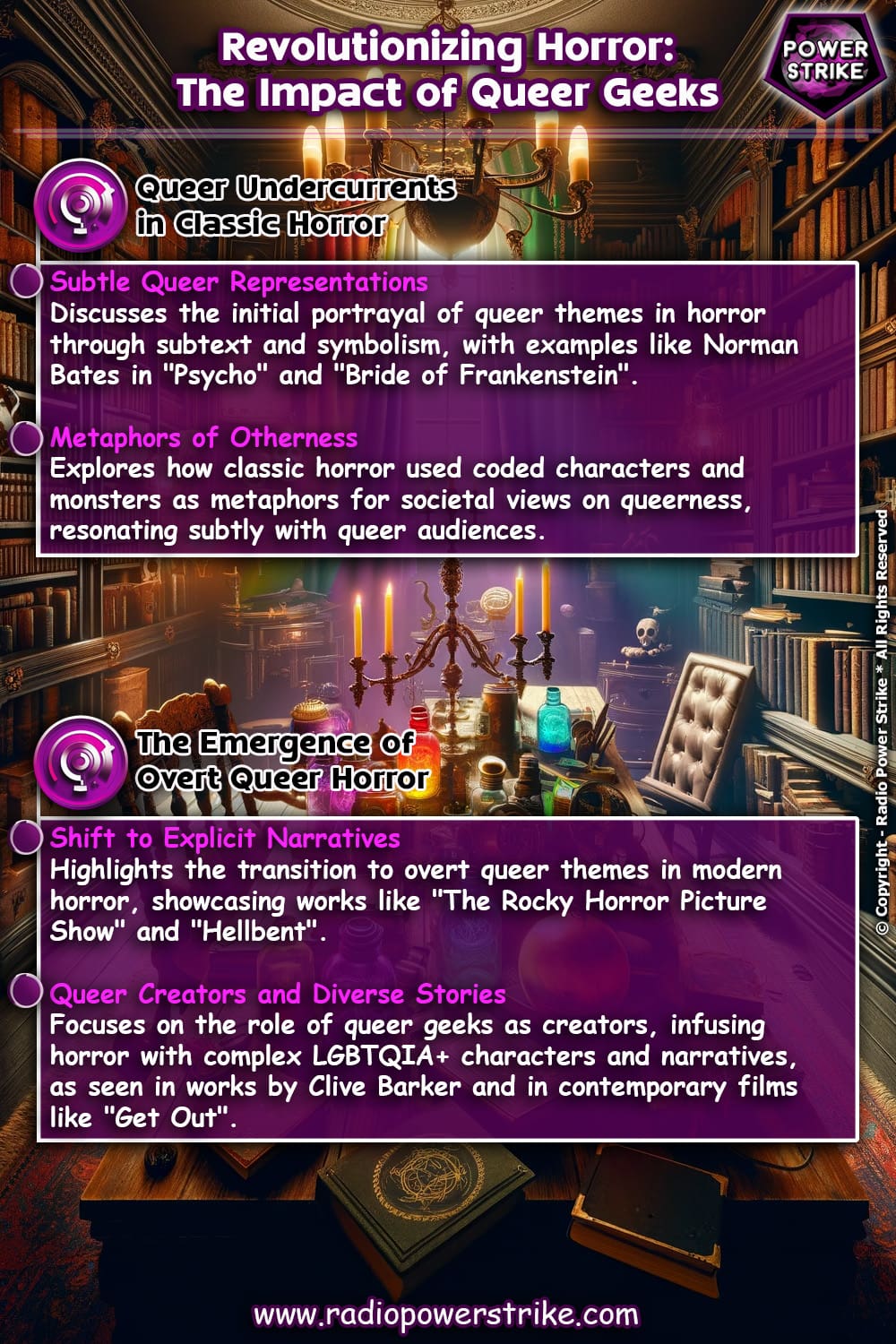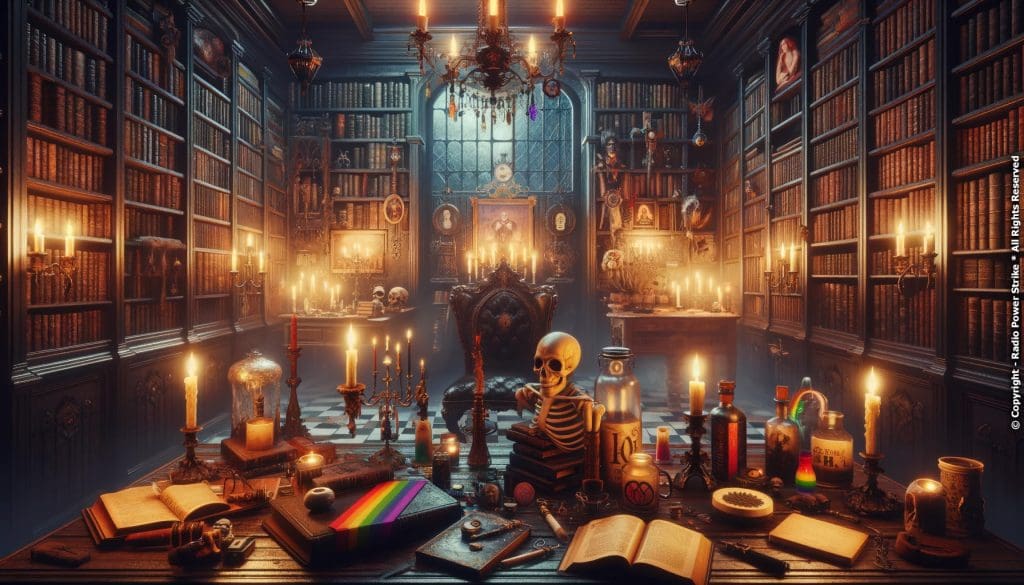Queer Geeks in Horror: Breaking Boundaries in a Classic Genre
The Evolution of LGBTQIA+ Narratives in Horror

Horror, as a genre, has always delved deep into societal fears and taboos. For many years, queer themes in horror were veiled, often layered with subtext and ambiguous representation. However, as queer geeks began to play influential roles in content creation, the horror genre witnessed a seismic shift. This article illuminates the significant contributions of queer geeks in horror, from decoding subtextual narratives to establishing groundbreaking and authentic queer horror stories.

Subtext and Symbolism: Early Queer Elements in Horror
Historically, queer representation in horror was achieved through subtlety and coded characters. The monster or the outsider, in many classic films, often bore traits or behaviors that queer audiences could identify with, even if unintentional.
For instance, the character of Norman Bates in “Psycho” and Dracula’s intimate bond with Renfield presented undertones that the queer community could resonate with. Many such classic horror films used their monsters and antagonists as metaphors for society’s view on queerness – the misunderstood, the other, the outsider.
Moreover, films like “Bride of Frankenstein” showcased themes of identity, creation, and societal ostracization that resonated with LGBTQIA+ audiences. These instances, though not overt, were powerful touchpoints for queer horror enthusiasts, who often had to look between the lines for representation.
The Turn of the Century: A Shift in Narratives
As the world moved into a more accepting era, horror began to reflect the societal changes. Queer geeks, both as creators and fans, started demanding more explicit representation, leading to a shift from subtext to overt narratives.
Movies such as “The Rocky Horror Picture Show” celebrated queer identity, becoming a cult favorite among both mainstream and LGBTQIA+ audiences. Similarly, “Hellbent”, touted as the first gay slasher film, placed queer characters at the forefront, moving away from the trope of queer characters as mere sidekicks or expendable entities.
Additionally, creators like Clive Barker, openly queer and proud, brought in rich, complex LGBTQIA+ characters and narratives into horror, enriching the genre with films like “Hellraiser” and the novella “Cabal”, which inspired “Nightbreed”.
Modern-Day Horror: Authenticity and Diversity

Today’s horror genre boasts a diverse range of narratives, with queer geeks taking the helm as writers, directors, and influencers. The focus has shifted from mere representation to authenticity and complexity in storytelling.
Recent films like “Get Out” and “Us”, though not exclusively queer, tackle themes of otherness, identity, and societal expectations, resonating with queer audiences. Shows like “Hannibal” portray complex relationships that defy heteronormative constructs.
Furthermore, conventions dedicated to queer horror have emerged, such as “Queer Fear”. These events celebrate the confluence of queerness and horror, providing platforms for discussions, screenings, and networking, further establishing the importance and influence of queer geeks in the realm of horror.
The realm of horror, from its early days of coded characters to its current era of diverse storytelling, owes much of its evolution to queer geeks. Their passion, advocacy, and talent have transformed the landscape, ensuring that horror remains not just a genre of scares but also one of representation, authenticity, and powerful narratives. As queer geeks continue their endeavors, horror enthusiasts can anticipate even richer, more layered tales that break boundaries and challenge conventions.

Comments are closed, but trackbacks and pingbacks are open.